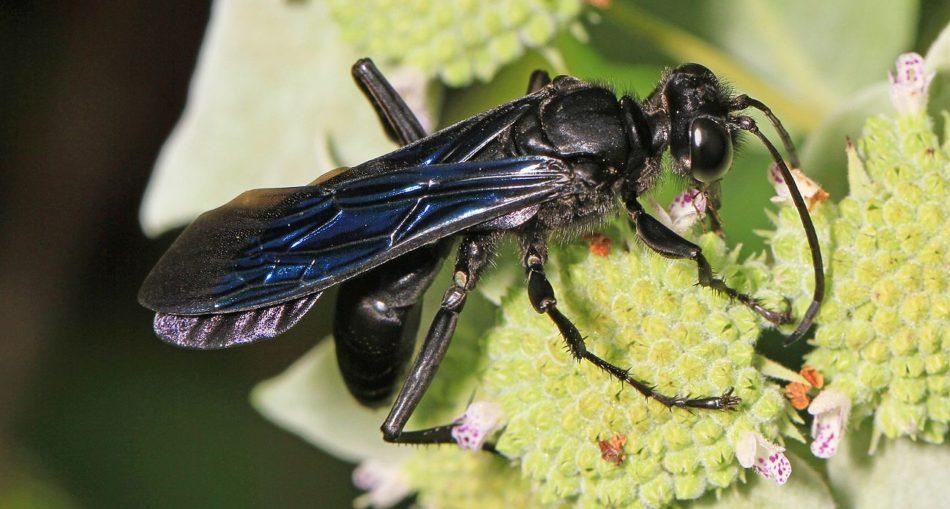There are over 5000 different species of spider wasps all across the world. in South America, species may be referred to as marabunta or marimbondo, though these names can be also applied to any very large stinging wasps.
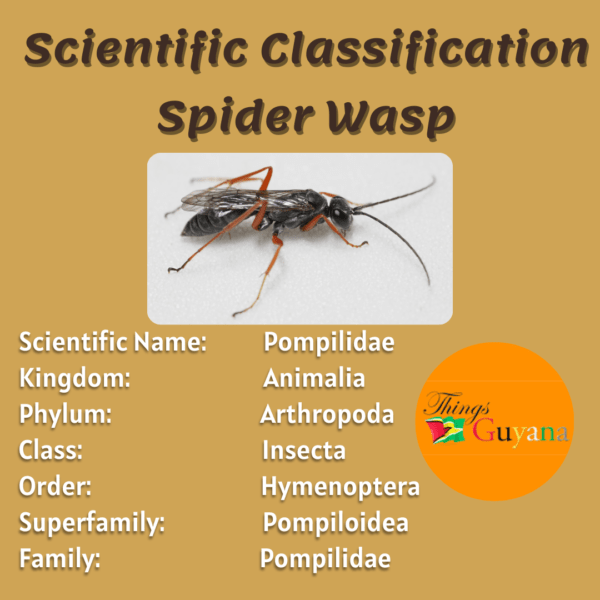
Marabunta Etymology
From the 1954 movie The Naked Jungle, perhaps directly from the other etymology, or from a parallel South American source, though this would apparently have been the first time it was applied to ants.
Clip from the movie “The Naked Jungle” in which they used the term ‘Marabunta’
https://www.tcm.com/video/1344361/naked-jungle-the-1954-marabunta/
Fun Fact: In Venezuela and Colombia, it is called matacaballos, or “horse killers”, while in Brazil some particular bigger and brighter species of the general marimbondo kind might be called fecha-goela/cerra-goela, or “throat locker”.
Description
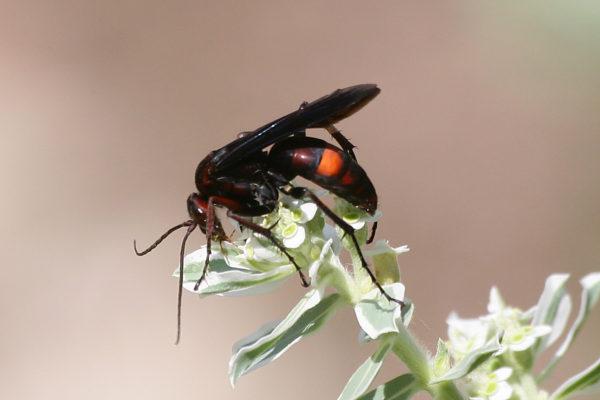
Photo of Spider Wasp. Photo Source: https://commons.wikimedia.org/wiki/File:Spider_Wasp.JPG
2 inches in length and a wingspan of 2 ½ to 4 inches. And it is the largest wasp species that can be found. Despite its large wingspan, it isn’t as fast but when it lands on the ground they tend to be very agile. Females are often quite larger than males. Spider wasps are most commonly known to be black, however, there are some species that can be found having a bright red, orange, or yellow band around their abdomen. Their wings have a bright, yellowish colour.
Fun Fact: They are aposematic meaning that their colour alerts predators that they are a potential threat and they should probably back off.
Habitat
Spider wasps live in urban areas, forests, woodlands, wetlands, and heath.
Diet
Adult spider wasps tend to feed on the nectar of plants and would do so by flying around a variety of plants.
Reproduction
They lure spiders out from their hiding by deceptively walking around their nesting area and when the spider comes out to feed they would swoop up from underneath the spider and give it a sting, inflicting its venom on the spider. The venom released can paralyze the spider so it can easily drag it back into its burrow and lays eggs on top of it. Some spider wasps can even carry their prey over water because of their lightweight and they can fly with them. Some spider wasps are so smart that they would put dead ants around the spider; the chemicals released by the ants deter predators from capturing the spider. When the eggs hatch the larvae will devour the spider and so the cycle continues. The larvae would leave vital organs such as the heart to consume last. The egg, larva, pupa, and adult are the four unique life stages of the spider wasp. They often spend the first years of their existence underground, hidden from the bitter winter. The spider wasp is held inside a silk cocoon to finish its transformation as it enters the pupa stage. They only have one generation every year, emerging as adults in the spring.
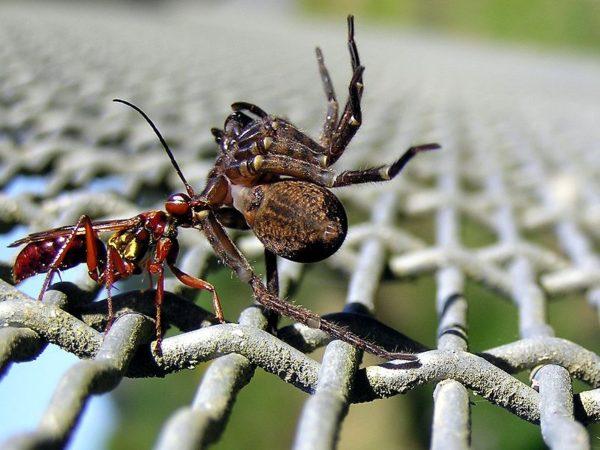
Spider Wasp Carrying Spider. Photo Source: https://en.wikipedia.org/wiki/Spider_wasp
Fun Fact: The size of the host can influence whether the wasp’s egg will develop as a male or a female; larger prey often yield the (larger) females.
Fun Facts
- Spider wasps are solitary animals and do not live in hives or colonies.
- Nests are made by a single female
- Their sting is not deadly to humans but you will experience intense pain that can last up to five minutes and include swelling.
- Some species have scales that enable them to walk on spider webs and ambush their prey.
- Fossils of spider wasps from the Eocene, which existed between 34 and 50 million years ago, have been discovered by scientists. Given their relatively simple social structure, some people argue that they reflect an early ancestral form of wasps. They are less related to yellow jackets and hornets and more related to velvet ants and club-horned wasps.
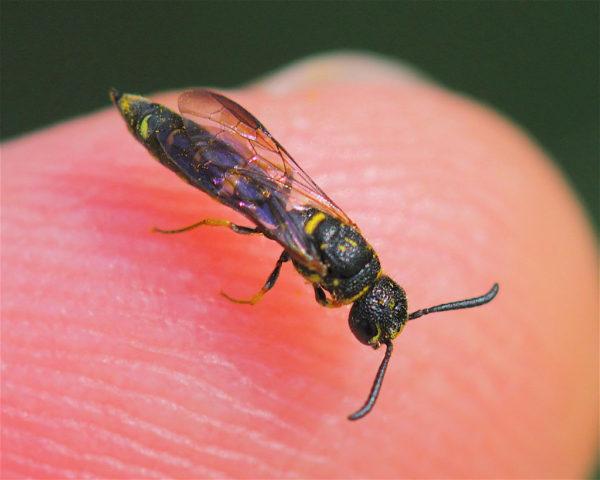
Photo of Club-Horned Wasp. Photo Source: https://www.flickr.com/photos/8583446@N05/32761665277/
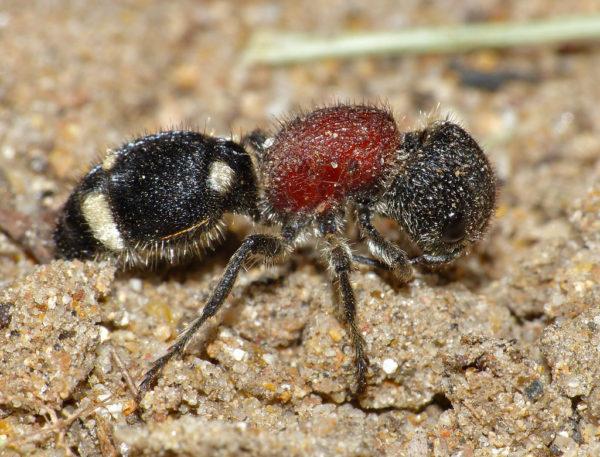
Photo of Velvet Ant. Photo Source: https://www.flickr.com/photos/berniedup/12013673395
Article Reference:
- https://www.britannica.com/animal/spider-wasp
- https://en.wikipedia.org/wiki/Spider_wasp
- https://www.kaieteurnewsonline.com/2009/03/15/the-spider-wasp/
- https://www.youtube.com/watch?v=uLf67sI9ZYI
- https://a-z-animals.com/animals/spider-wasp/#single-animal-text

